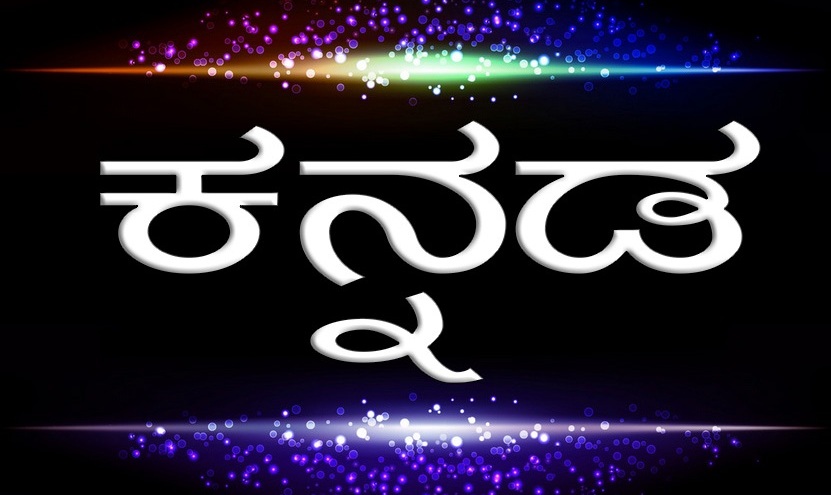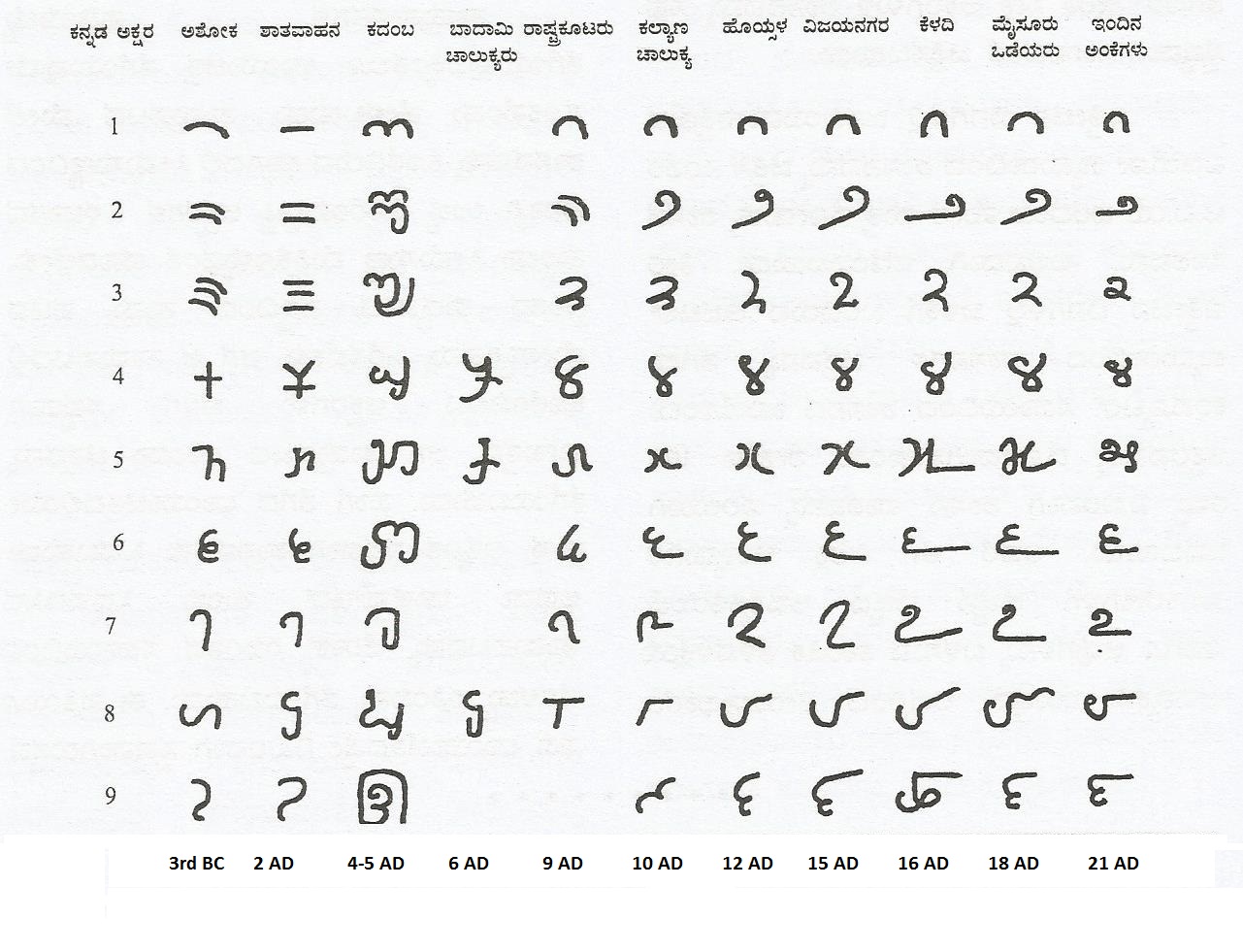
AuthorAiswariya DeivamUpdated on CategoriesLanguages
‘KANNADA’ ( ಕನ್ನಡ ) – THE HISTORY
'KANNADA' (ಕನ್ನಡ ) - THE HISTORY
The origin of Kannada language, also known as Kanarese, or Canarese, belongs to the Southern branch of the Dravidian language family. It is spoken as a first language by 38 million people and as a second language by another 9 million people in southern India, primarily in the state of Karnataka. Kannada is the second oldest of the four major Dravidian languages with a literary tradition. The oldest Kannada inscription was discovered at the small community of Halmidi and dates to about 450 CE. The Kannada script evolved from southern varieties of the Ashokan Brahmi script. The Kannada script is closely related to the Telugu script; both emerged from an Old Kannarese (Karnataka) script. Three historical stages are recognised: Old Kannada (450–1200 CE), Middle Kannada (1200–1700 CE), and Modern Kannada (1700 CE–present).

By Aiswariya Deivam
According to Census record:
It is spoken predominantly in the state of Karnataka in India (one of the four southern states in India), though a significant number of Kannada speaking people can also be found in the other states. It is also spoken in the neighboring states of Andhra Pradesh, Tamil Nadu, and Maharashtra. It is estimated that world-wide it is spoken by upward of 44 million people, including those who speak it as a second language (Ethnologue).
Early 21st-century census data indicated that some 38 million individuals spoke Kannada as their first language; another 9 to 10 million were thought to speak it as a secondary language. Kannada is the mother tongue of 44 million people who live mostly in these four states of South India (speakers in millions): Karnataka (40.4), Maharashtra (1.4), Tamil Nadu (1.2), Andhra Pradesh (0.7). Kannada is the official language of the state of Karnataka and one of the 23 scheduled languages of India.
Classifications:
Kannada and Telugu have almost the same script. Kannada as a language has undergone modifications since BCs. It can be classified into four types:
- Purva Halegannada (from the beginning till 10th Century)
- Halegannada (from 10th Century to 12th Century)
- Nadugannada (from 12th Century to 15th Century)
- Hosagannada (from 15th Century)
It stands in the 27th place of the most spoken language in the world and there are about 35 million Kannadigas (Kanadda speaking people) in the world. It is one of the official languages of the Republic of India and the official and administrative language of the Indian state, Karnataka. The earliest inscriptional records in Kannada are from the 6th century. Kannada script which is closely similar to Telugu script in origin. Kannada has a number of regional and social dialects and has marked distinctions between formal and informal usage.
Script Origination:
Kannada script originated from southern Bramhi lipi of Ashoka period. With time, it underwent so many changes in the reign of Sathavahanas, Kadambas, Gangas, Rastrakutas, and Hoysalas. A mixture of Telugu-Kannada scripts has been used in Kadambas of Banavasi and the early Chalukya of Badami inscriptions in the west even before the Seventh Century. In the middle of the seventh century a new variety of the Telugu-Kannada scripts was developed. Only in the 13th century, the modern Kannada and Telugu scripts were developed. Other languages like Konkani, Kodava and Tulu use only Kannada script.
Three regional varieties of Kannada are identifiable. The southern variety is associated with the cities of Mysore and Bangalore, the northern with Hubli-Dharwad, and the coastal with Mangalore. The prestige varieties are based on the Mysore-Bangalore variety. Social varieties are currently characterized by education and class or caste, resulting in at least three distinct social dialects: Brahman, non-Brahman, and Dalit (formerly untouchable). A diglossia or dichotomy also exists between formal literary varieties and spoken varieties.
The early development of the Kannada language was independent of the Sanskrit influence. However during later centuries, Kannada, like the other Dravidian languages was greatly influenced by Sanskrit in terms of vocabulary, grammar and literary style. As such, Kannada shares a large number of structural features with other Indian language scripts. The writing system of Kannada script includes the principles that governs the phonetics and is a system of syllabic and phonemic writing.

Literature and Language Development:
Kannada literature began with the Kavirajamarga of Nripatunga (9th century CE) and was followed by Pampa’s Bharata (941 CE). The earliest extant grammar is by Nagavarma and dates to the early 12th century; the grammar of Keshiraja (1260 CE) is still respected. Kannada literature was influenced by the Lingayat (Virasaiva) and the Haridasa movements. In the 16th century the Haridasa movement of vernacular devotional song reached its zenith with Purandaradasa and Kanakadasa, the former considered the father of Karnatak music, the classical music of southern India.
The earliest inscriptional records in Kannada are from the 6th century. We can not determine the origin of Kannada literature from early (pre 800 AD) pieces of work available now. The oldest extant book is king Nripatunga’s literary critique Kavi Raja Marga (around 840AD). Jainism was a popular religion at that time and there were some Jaina poets like Srivijaya and Guna Varman.
During the 10th century, a new tradition by mixing prose and verse with the campu (an Indian verse form) style was introduced. The poets Pampa, Ponna and Ranna, known as the Three Gems of Kannada literature, extensively wrote on episodes from the Ramayana and Mahabharata and Jain legends and biographies. Then Chavunda Raya wrote the history of all the 24 Jaina tirthankaras (saintly teachers).
Around the 11th century, Kannada literature experienced a setback due to invasion from Tamil kings and only a few literary works could be seen done in this period.

